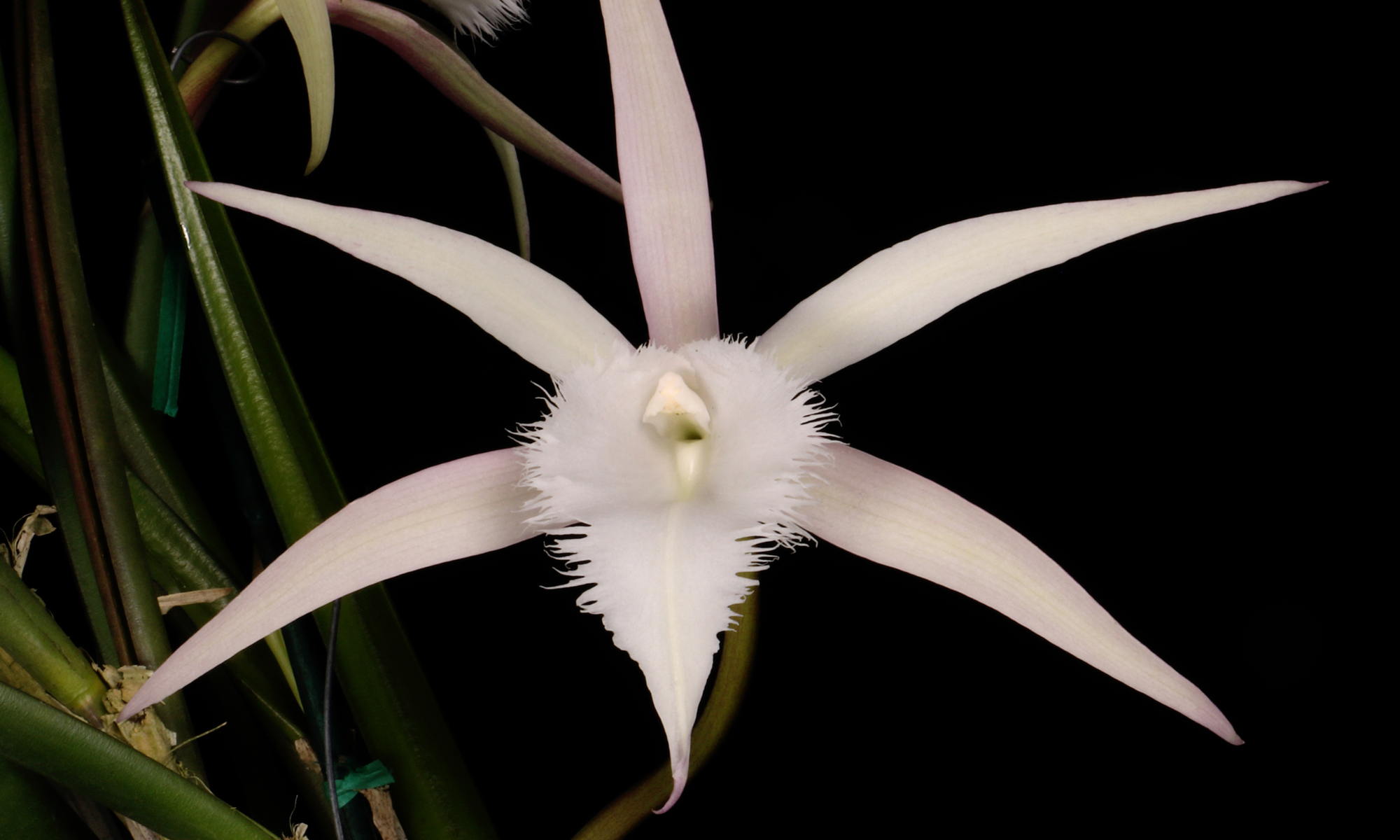All orchids need food. Something is better than nothing. Fertilizer selection can be very complex, but it can also be very simple. Feed your orchids!
Here’s an excerpt from “A Pocket Guide to Orchids” by Greg Allikas and Ned Nash © 2004
Your choice of fertilizer will be governed by your choice of potting medium. Traditional mixes, based on wood products such as fir bark, require high nitrogen fertilizers, while most other media do best when fertilized with a balanced formula. You will see a series of three numbers on fertilizer packaging, known as the N-P-K (nitrogen -phosphate-potassium) ratio. Fertilizers for fir bark generally have a 3:1:1 ratio, while a balanced fertilizer will be 1:1:1. If in doubt, use a balanced fertilizer.
A good general rule for fertilizing is “weakly, weekly.” Fertilize your plants at approximately one quarter label strength every week, and you’ll never have to worry about whether you ought to fertilize this week or not. Your plants will also perform better than with occasional jolts of full strength. Fertilizing and watering go hand-in-hand. If you are watering less frequently, fertilize less. If you are having to water more often, as you may in summer months, you can increase fertilizer commensurately.
Many South Florida growers would add these comments to the above:
- Avoid fir bark mixes; they get snowy molds in our climate
- The Michigan State formula is recommended… it has extra calcium and magnesium that our plants need (13-3-15 8Ca-2Mg)
- If you don’t use a cal-mag formula, you can supplement your feeding with Epsom salts (magnesium) and calcium nitrate.
- Many growers are incorporating micronutrient mixes into their feeding schedule as new research finds it valuable.
- Learn your plants! Some will not flower without a dormant period in winter: no food, little water. (This is where talking to an orchid society member can help 🙂 )
